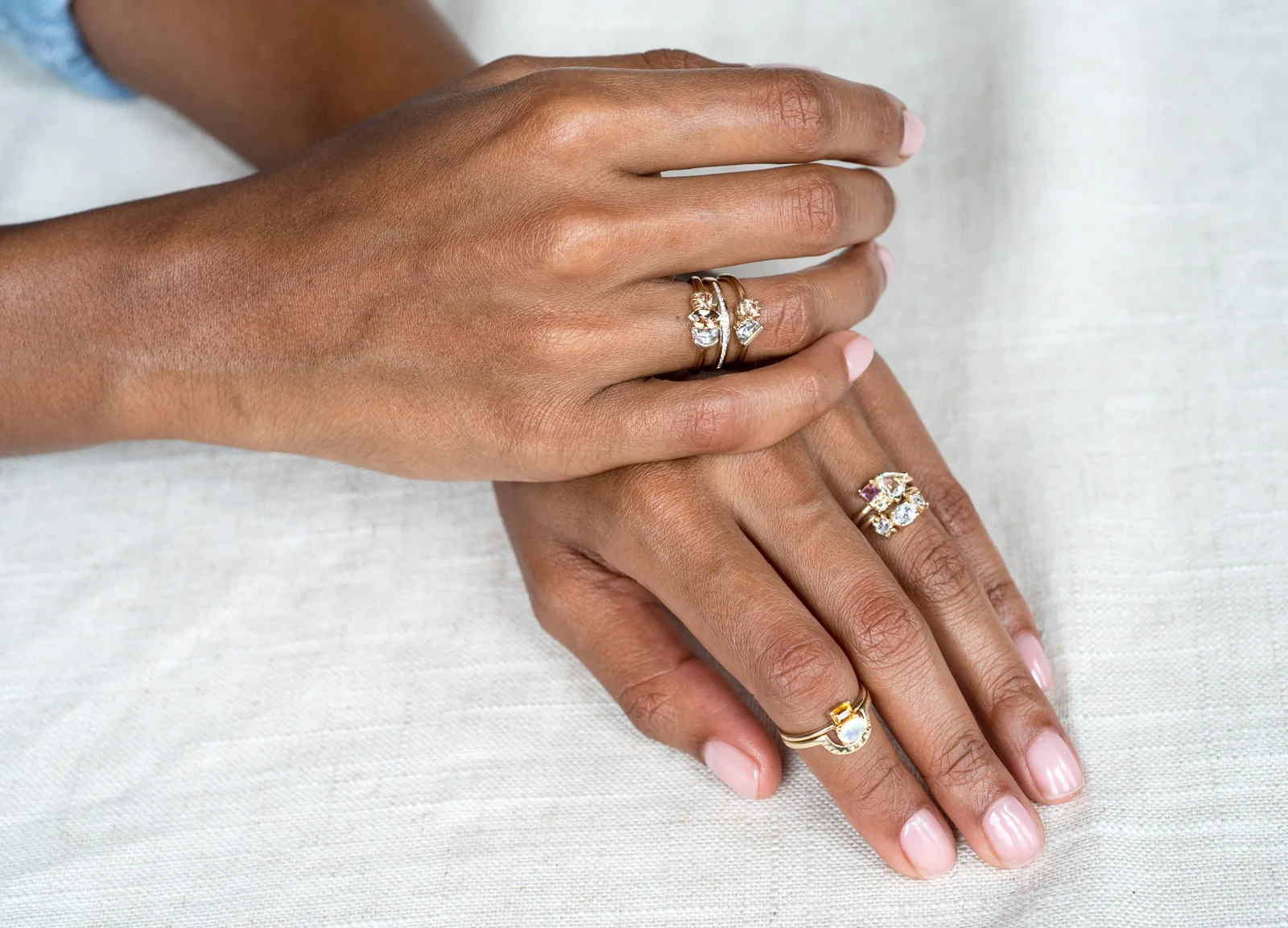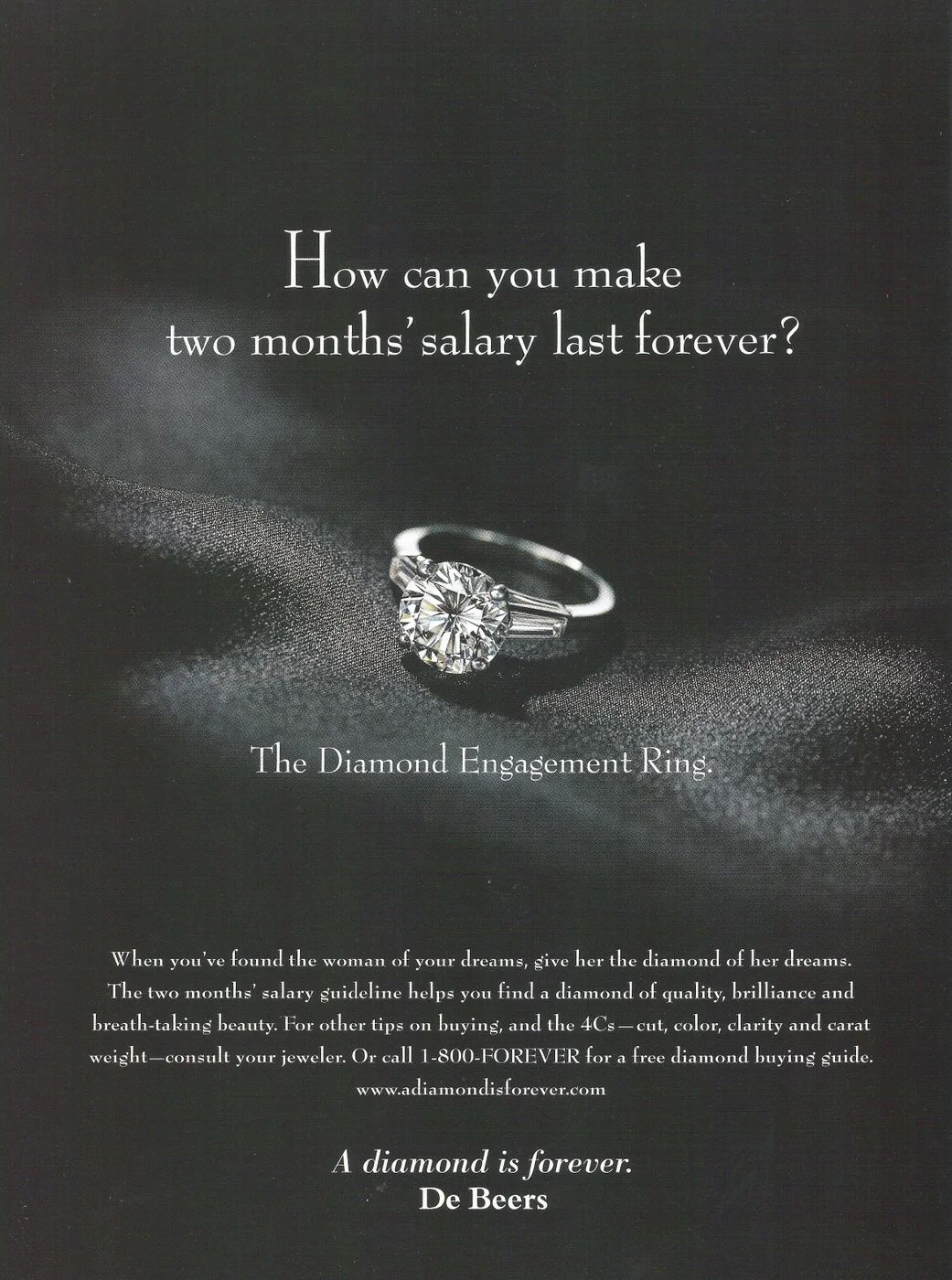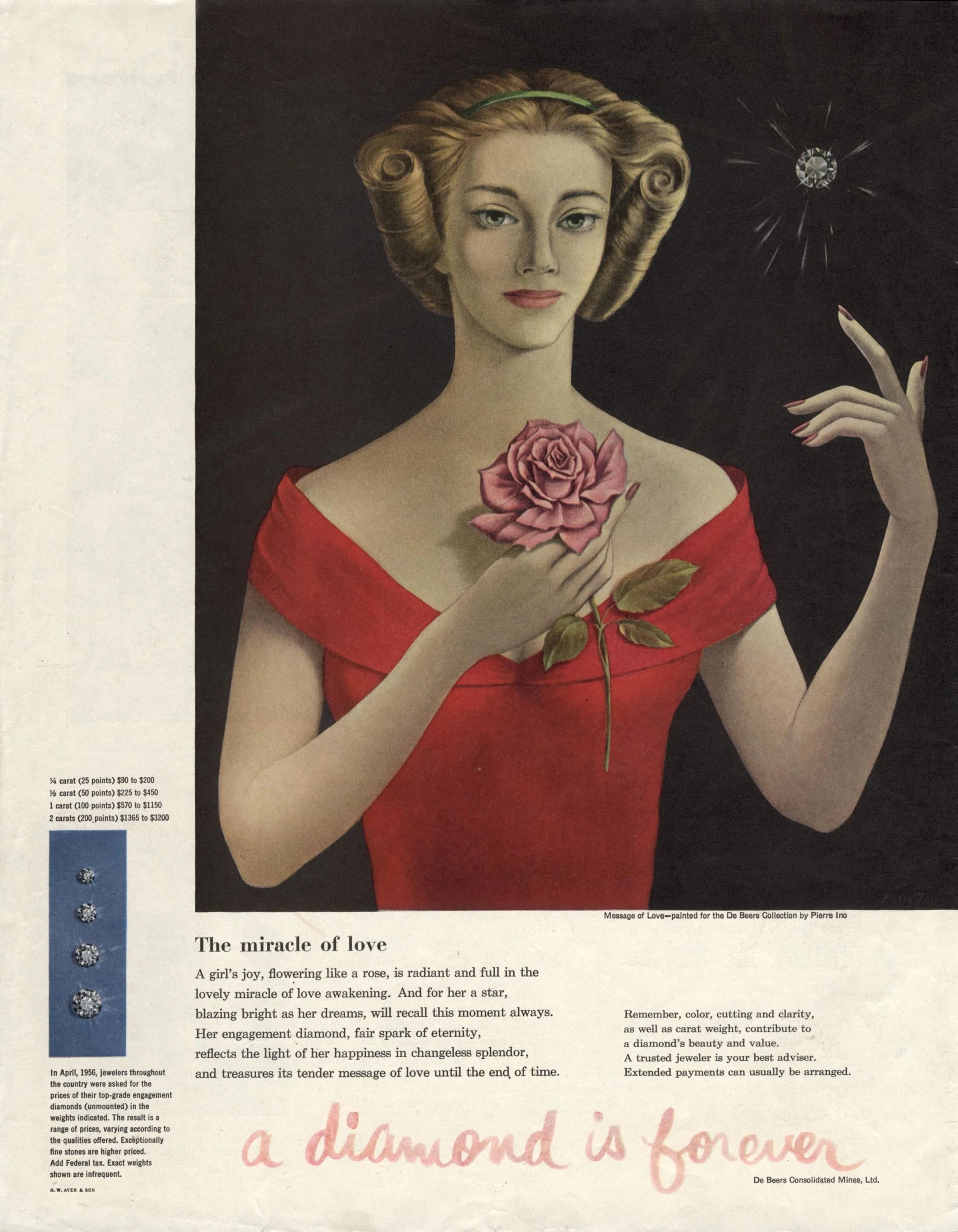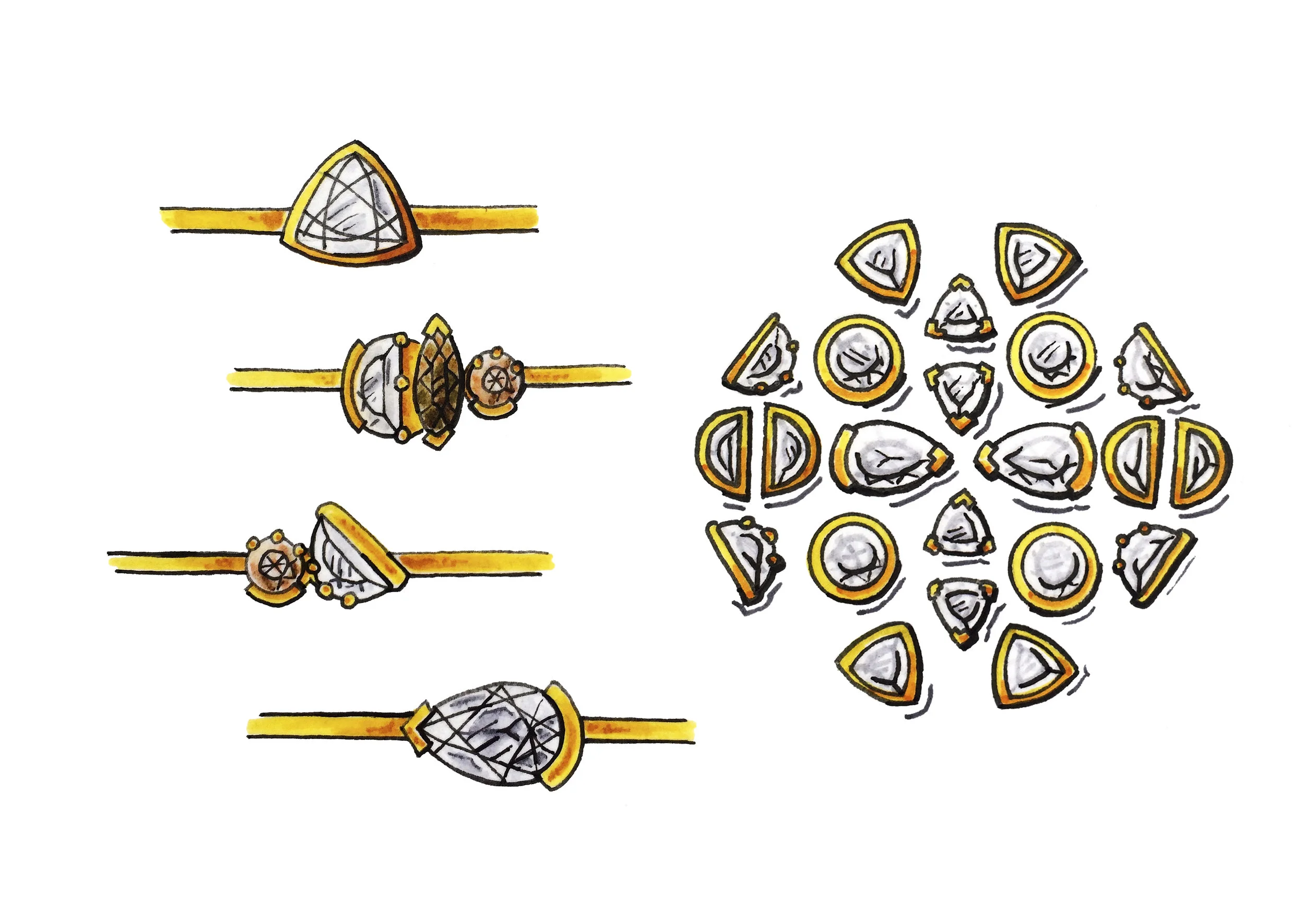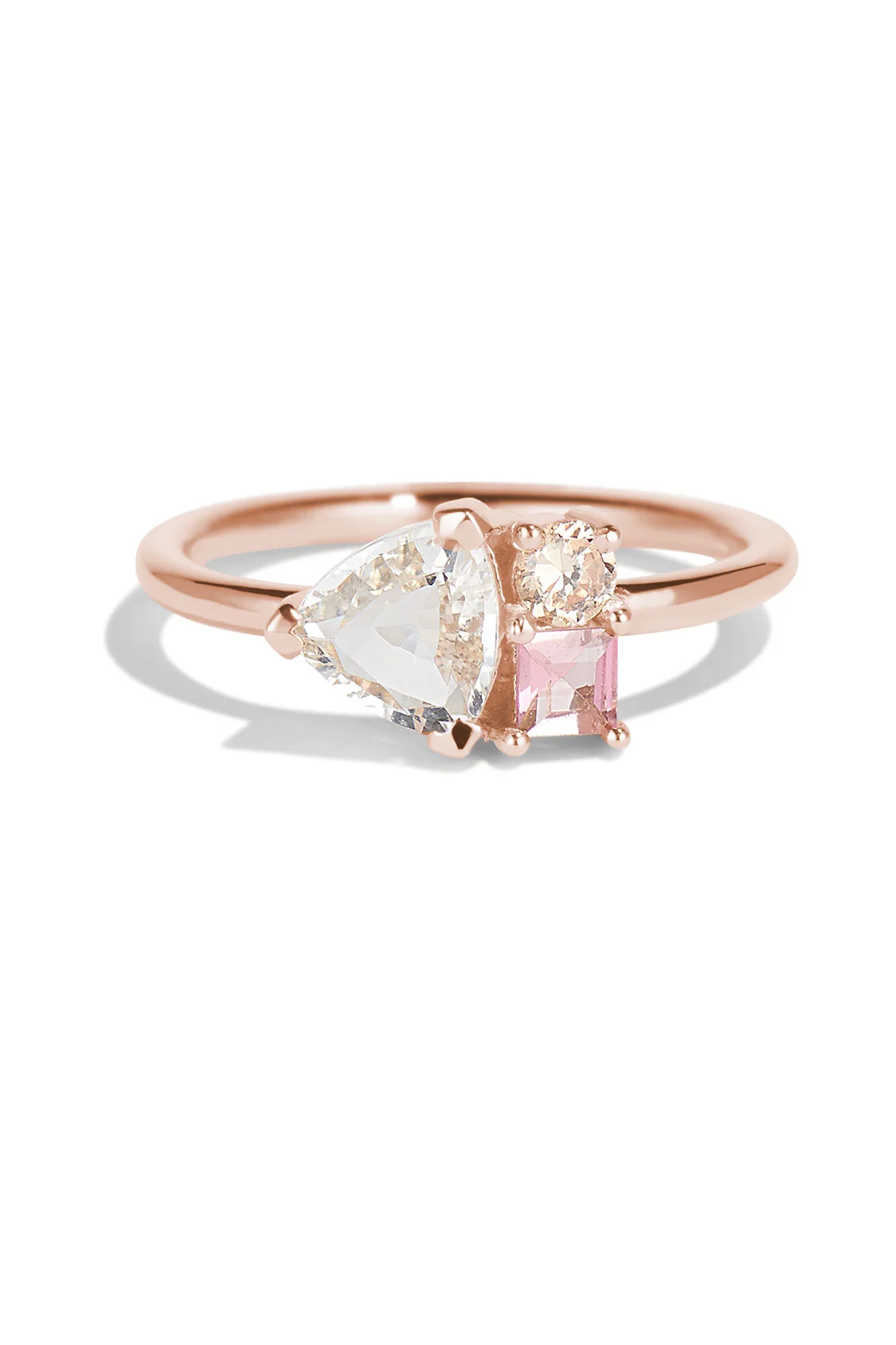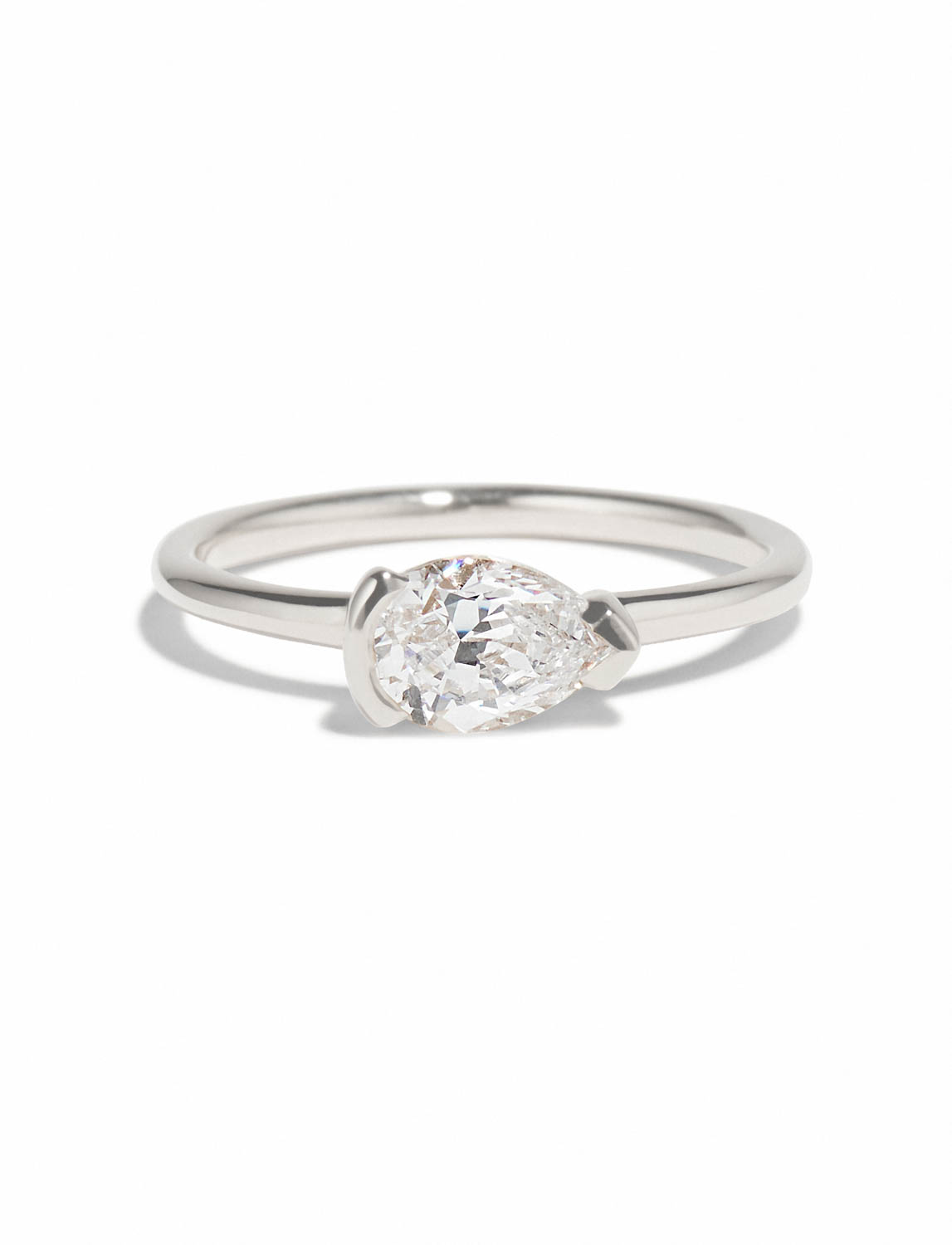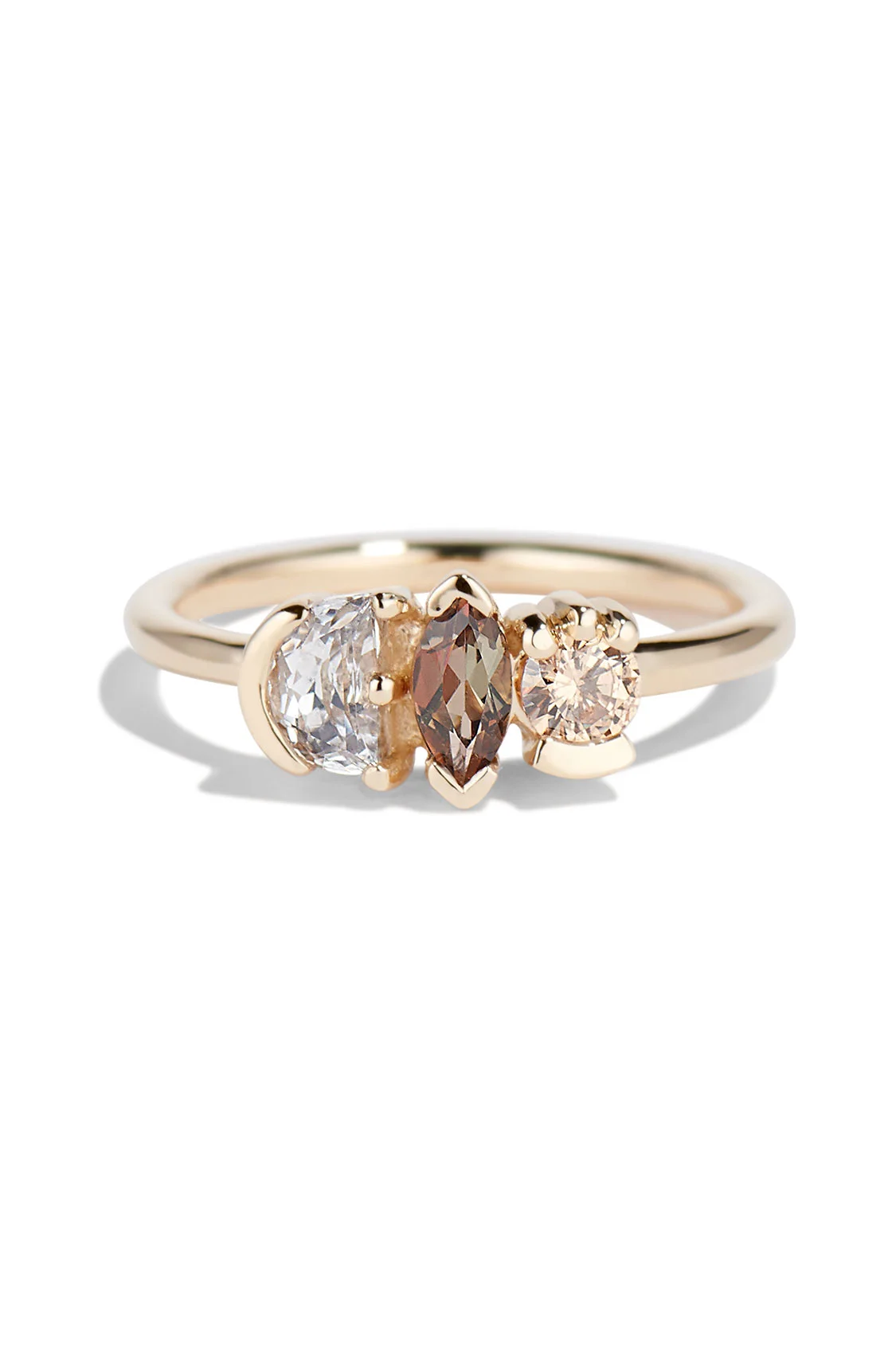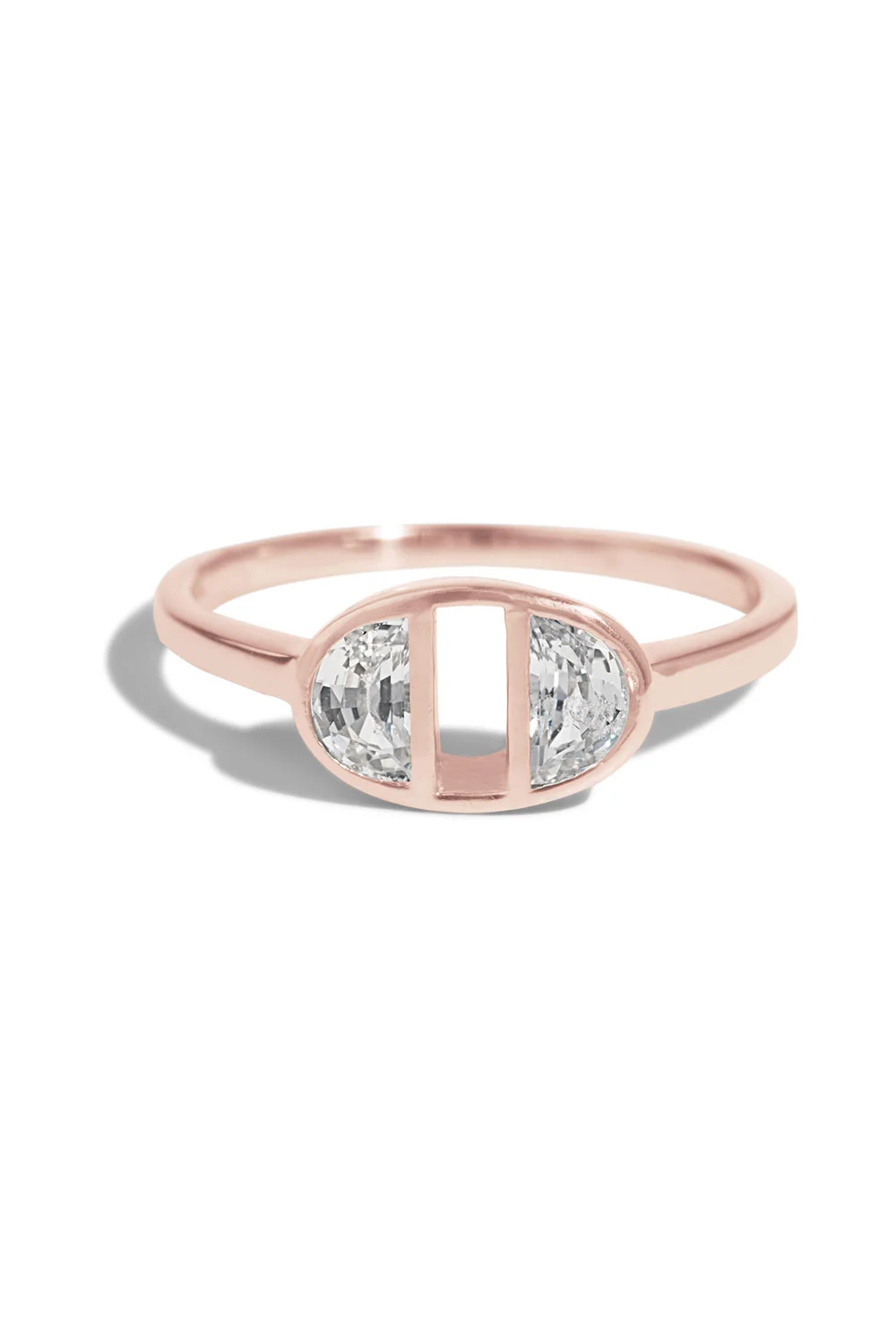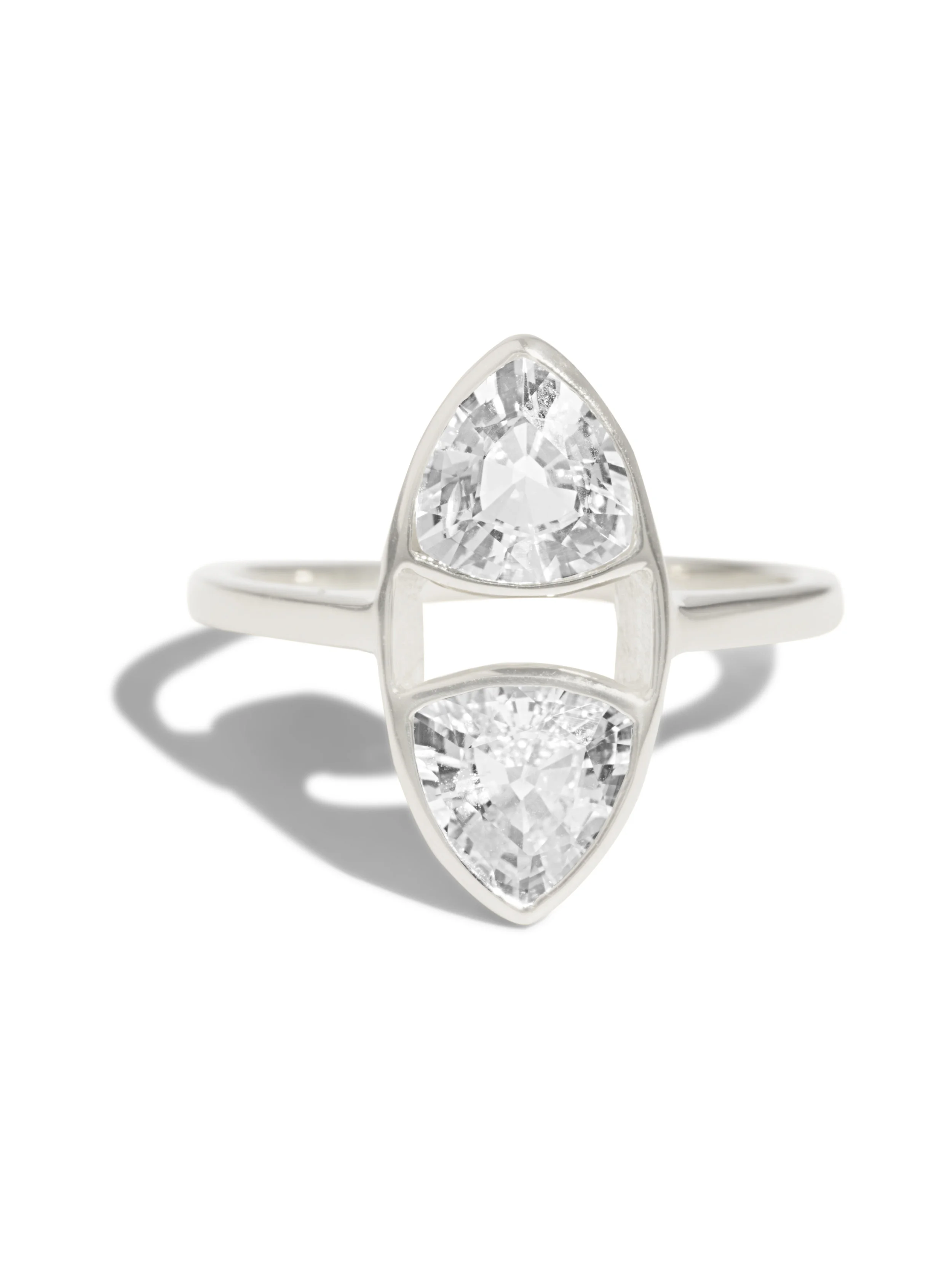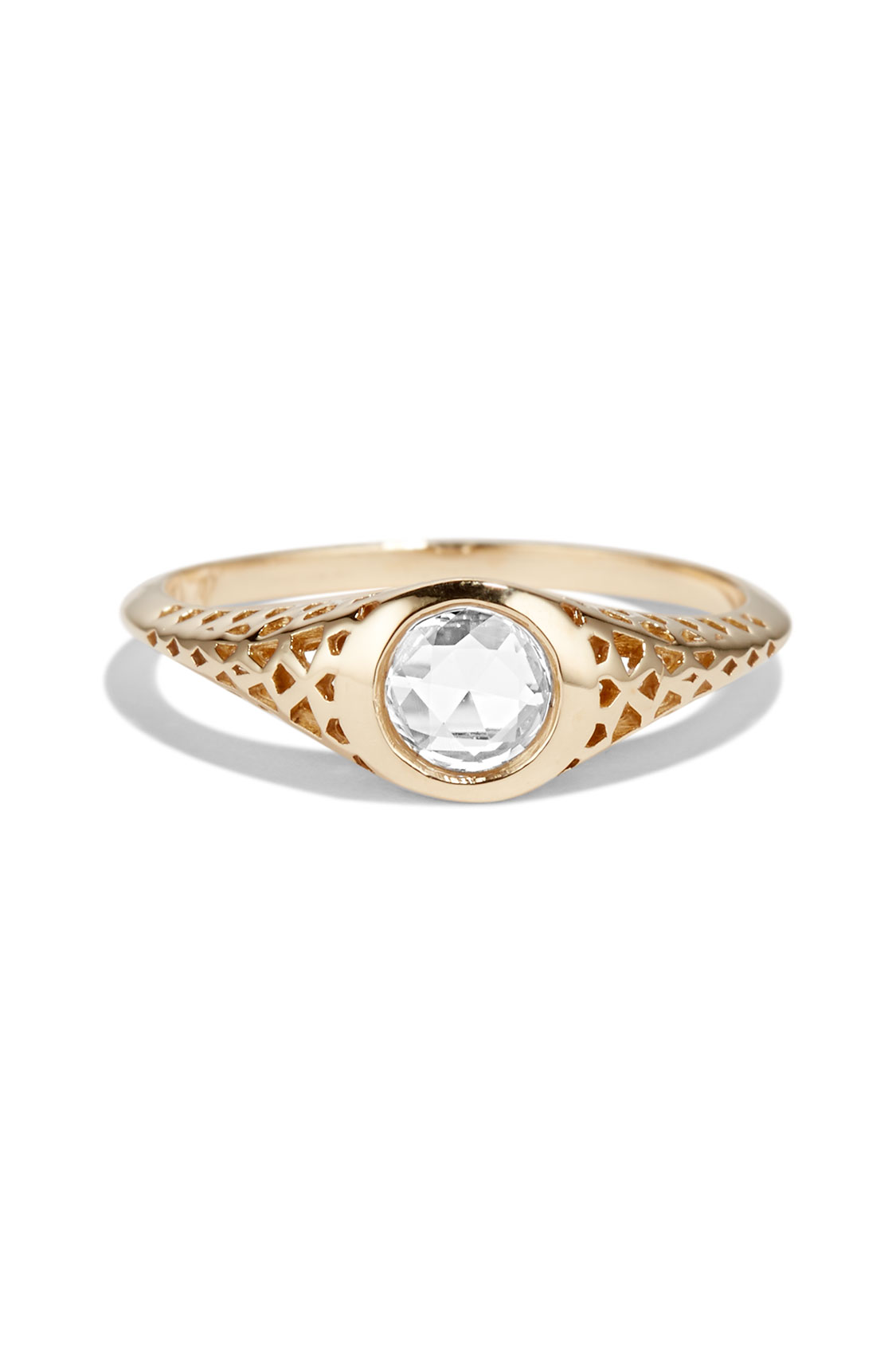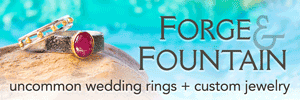White Sapphires as an Alternative to Diamonds // Bario Neal Goes Behind the Ring
/All photos care of Bario Neal
Feeling a little put off by the pressure surrounding engagement rings and weddings in general? Believe it or not, there’s a jeweler who’s actually with you. Most of the mainstream marketing systems and tactics to date are not good for women, men, marginalized peoples, nor the collective future we want to see. Combine two giant, problematic industries — fine jewelry and weddings — and you get a monoculture largely incongruent with everything we stand for. In our new series, Behind the Ring, the ethical jewelry company Bario Neal, investigates the intersection of these industries in an attempt to to dismantle and resist social norms.
In this article, we’ll challenge your assumption that diamonds are synonymous with proposals and explore a natural diamond-alternative: the White Sapphire.
The History of the Diamond Engagement Ring
Diamonds were first seen in India in the 4th century BC, but scientists believe these magical pieces of earth dust formed around 3-4 billion years ago. Used for thousands of years for human decoration, tools, and trade, this ancient mineral is one of the hardest known materials in the world. But how the diamond became de rigueur for a modern betrothal is a tale of good old-fashioned “late capitalism.”
In the 1930s and 40s, diamond supplies were plentiful, sales were down, and one company, De Beers, controlled the market. The era’s leading advertising agency, N.W. Ayer, coined the slogan, “A diamond is forever,” plastering it everywhere. This “slogan of the century” is the reason that diamonds are now considered the only choice for engagement ring. The ad campaign squarely hit its target market of arguably repressed, middle-class women, and the diamond engagement ring industry was born. Then, in the 1980s, they “struck gold” again with a template for how big your diamond should be according to your social status, thereby introducing the two months’ salary concept. Fast forward to today, and the trend shows no sign of stopping; nearly 80% of engagement rings sold contain diamonds.
There you have it: a carefully manufactured tactic to create market authority and demand, promoting conventional femininity, sexuality, classism, wealth, and social status — and we haven’t even begun talking about the well-documented, true price of blood diamonds.
An Alternative to Diamonds: White Sapphires
All that being said, like us, you still love jewelry, engagement rings, and you really care about doing the whole wedding thing — but in a way that actually represents who you are. Maybe you also like the look of a colorless center stone, but you are feeling unsure about a diamond for all of the above reasons.
(Rest assured — we never, ever use conflict diamonds and strive for the utmost traceability. We do have diamonds to be proud of.)
But you’re wondering, are there other options out there for a long-wearing, heirloom-quality, clear gemstone? Yes. Most people don't know all that much about the origins of these incredible, world-changing, milestone-marking molecules, so let’s take a dive into explaining the Sapphire.
Sapphires are one of the “cardinal stones” (amethyst, ruby, emerald, and diamonds make up the others), gemstones that have traditionally been considered precious above all others; and are second only to diamonds on the hardness scale. Though they are known for being blue, sapphires actually come in all colors. Fun fact: the ruby is actually a sapphire! If we lost you, it’s because sapphires and rubies are both made of the same material, known by a way less cool name: corundum. Sapphires of any color and rubies, which are also corundum, get their color from chemical impurities. Rubies are red because they contain chromium. They must contain at least 1% chromium to exhibit a deep red color, and if the chromium content is lower, the stones are lighter and are classed as pink sapphires. If traces of titanium are also present, the stone will have a more purple hue, although attempts are sometimes made to reduce this effect via heat treatment. Blue sapphires are blue because of a mixture of iron and titanium; if only iron is present, the stone will be a pale yellow color. Only 0.01% of iron and titanium needs to be present for a stone to be blue, which is a small amount when compared to the 1% chromium required for deep red rubies. The type of corundum that is free from impurities is colorless or ‘white,’ so a white sapphire is corundum in its purest, rarest form.
Find more gemstone rings by Bario Neal
So there you have it, white sapphires are the most natural, hard, rare gemstone that are second only to diamonds. Though not imbued with the same properties or “fire” as a diamond, they are more affordable and are therefore more attainable in larger stone sizes with pristine clarity that can be designed with custom cuts. White sapphires also don’t come with all the trappings of diamonds and can be a conversation-starter with a unique story.
Ethics of Choosing a Sapphire over a Diamond
But that’s not all. There are more reasons for why we are so excited about white sapphires! Bario Neal has the maxim, "4 C’s & an S" (carat, color, clarity, cut AND the source). For us, a perfect gem needs a perfect source, and we are pretty proud of this one. Choosing one of our white sapphires directly supports an artisanal, family-run mine in Sri Lanka.
Sri Lanka’s gem industry has a long and colorful history. The South Asian Island, once called Ratna-Dweepa, or “Gem Island,” was called “Ceylon” under British colonial rule until 1972, a term now synonymous with sapphires. Traceability to the source is incredibly important because many sapphires are illegally smuggled in from Madagascar and are sold as Sri Lankan stones.
All of our natural, high clarity white, pink, yellow, apricot, and a variety of blue sapphires are extracted and cut by an artisanal, family operation that helps to protect the ecosystem of this island paradise. Here, the father, though older, still participates in this three generation operation that started 60 years ago on his grandfather’s land. So how does this differ from a diamond mine?
Kerin Jacobs, of The Raw Stone, writes: “Diamond mining, for the most part is on a giant scale, creating huge pits in the earth using large-scale machinery, with a huge environmental impact. This type of small-scale mining, however, removes the precious gems using a combination of hand tools and small machinery, creating minimal environmental impact.”
In small-scale mining, only a very small area of earth is removed, making an environmental impact that is usually smaller than the footprint of the average US home per year. No heavy machinery is involved, so there are no emissions, no fuel usage, and no noise pollution. No suction machines are used, as these can cause instability of river banks.
Instead of being run by a far-away shadowy company, operating on borrowed indigenous land, these owners are involved in all aspects of the mine’s daily operations and have a vested interest in keeping the methods sustainable because their future depends on it. Licensed by the government, yearly inspections ensure everyone is using up-to-date equipment in a clean, safe environment.
Plus, all cutting and polishing is done on site at the mine, eliminating outsourcing to a cutting facility where human rights abuses often occur. Human rights abuses can include forced labor, child labor, forced child labor, poor hygiene at busy sites, poor and dangerous working conditions, low pay, indentured labor, violence and intimidation, and removal of local people from area. Keeping things in-house also allows for custom-cuts and design right at the mine despite being thousands of miles away! Orders are placed and conducted over video, meaning the supply chain for these magical gemstones go beyond current “mine to market” standards. We have gorgeous custom cuts in magical, gleaming shapes that are born out of our relationship with our source in Sri Lanka.
Now we know that “white sapphires are forever” doesn’t quite have the same ring to it, but we think you will be pretty stoked to say, “Actually that’s a white sapphire.”

